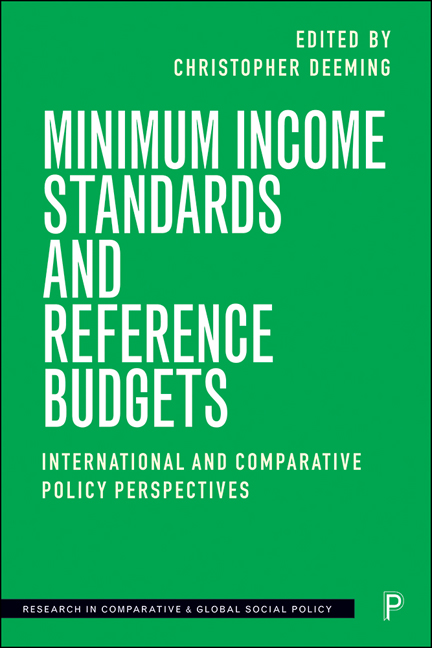14 - Minimum Budgets for Danish Families
Published online by Cambridge University Press: 12 March 2021
Summary
Introduction
Minimum budgets are developed to calculate the consumption expenditures associated with the living of a modest but still healthy and basic social life for different families, while reference budgets refer to lives with more ordinary living expenditures closer to most people's living conditions. The first version of minimum and reference budgets were British (Bradshaw, 1993), and in 1993 the Danish Consumption Agency asked the Centre for Alternative Society Analysis (CASA) to do the same for Denmark, which are now updated with the present budgets for 2015.
The present minimum and reference budgets follow the procedures for the previous budgets, once again used to find the money needed to be given to help vulnerable families and the amount of money left for consumption when investing in a household. The minimum budget relies on what ten expert groups find is needed for the living of a modest but still healthy life, differentiating between ten family or household groups. The expenditures within each group vary according to the number of people in the household, their age and their gender.
Minimum budgets are also used to estimate the number of families living in poverty (Bonke and Wiese, 2017) and thereby to measure society's economic conditions. The cost of buying all the different goods and services following the minimum budget is compared to disposable income, and if income is below the calculated minimum budget for the specific household type their living conditions are considered unsatisfied following the standards the experts found as a minimum in Denmark in 2015.
Minimum budget: a modest and necessary consumption level
The minimum budget covers all living expenses and aims to enable a life satisfying basic human needs in modern Denmark, which means being able to afford necessary and modest housing, food, water, clothing, personal hygiene, limited social participation as well as being able to afford basic entertainment for children. The budget includes ten different categories of consumer goods and services, where, for example, personal hygiene and health consist of 61 different products and services. A group of experts associated with each of the ten categories have assessed which goods and services are to be included, taking into consideration the composition of families and individuals of different ages, gender and civil status.
- Type
- Chapter
- Information
- Minimum Income Standards and Reference BudgetsInternational and Comparative Policy Perspectives, pp. 197 - 206Publisher: Bristol University PressPrint publication year: 2020



